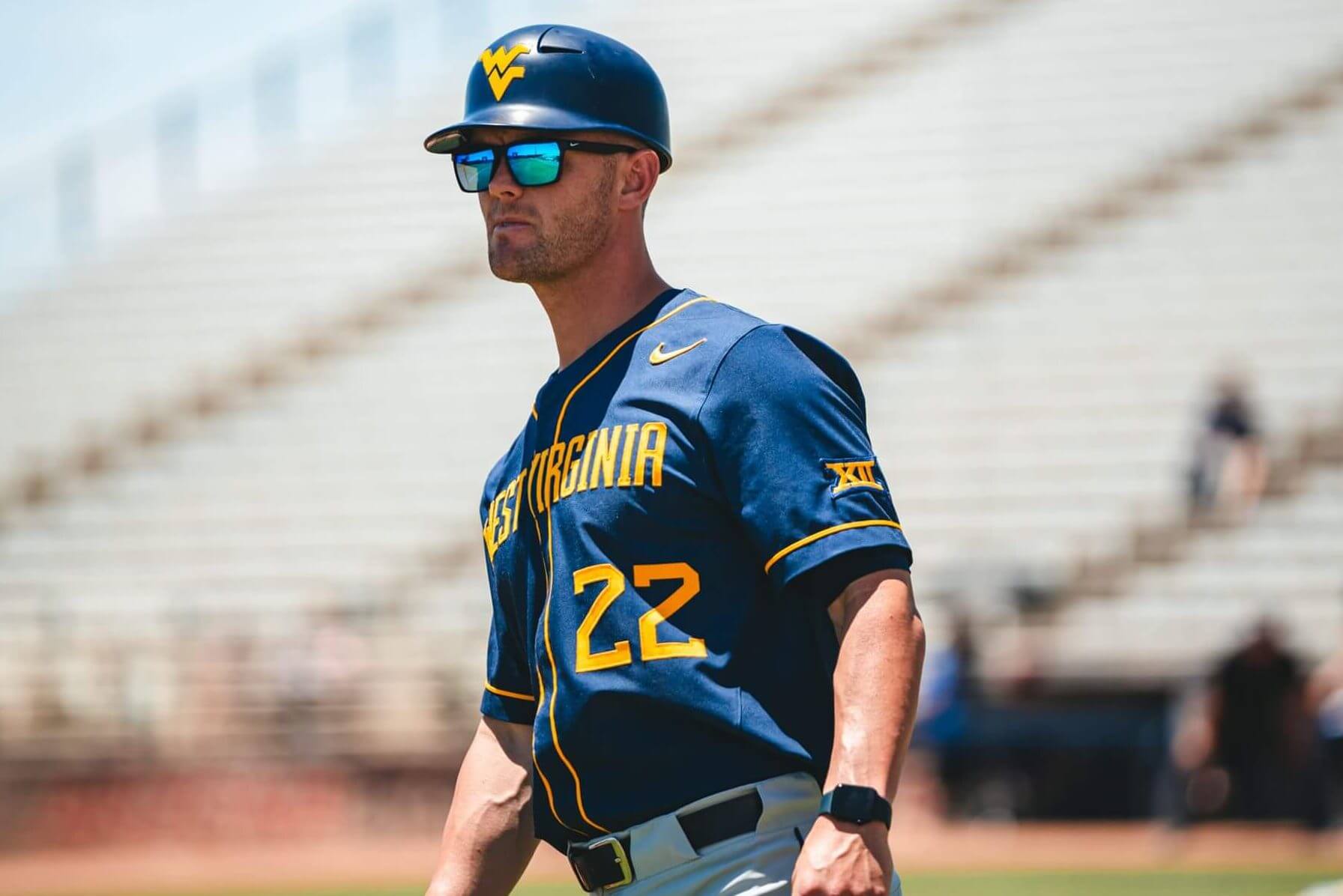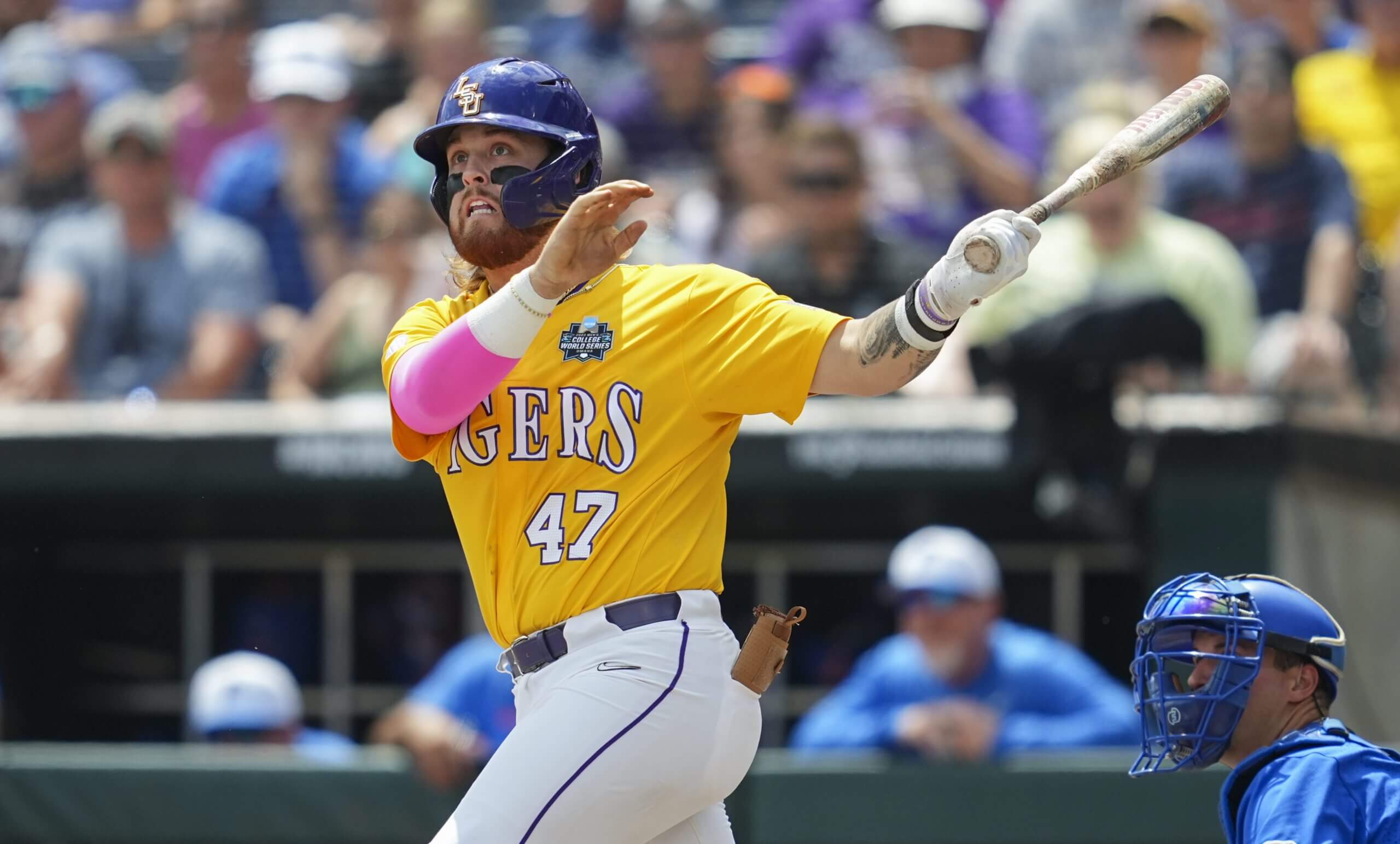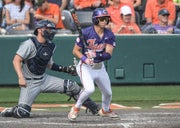The college baseball season begins Friday. The sport has never been in a better place. More games are on television. More fans are attending games in person. And the talent level is at an all-time high.
We talked to 10 coaches to get their thoughts on various topics impacting the sport. In Part 1, published Monday, we asked the coaches to name the best players in the game and identify teams to watch this spring. On Tuesday, in Part 2, the coaches shared some recruiting memories. Who is the biggest recruiting find of their career? What about the one who got away? In Part 3, on Wednesday, we dove into some hot topics in college baseball — roster sizes and revenue sharing. And today, in Part 4, the coaches discuss the name, image and likeness market and the transfer portal.
Here are the coaches:
- Elliott Avent, NC State
- Willie Bloomquist, Arizona State
- Paul Mainieri, South Carolina
- Nick Mingione, Kentucky
- Billy O’Conner, Xavier
- Brian O’Connor, Virginia
- Kevin O’Sullivan, Florida
- Steve Sabins, West Virginia
- Brock Ungricht, San Diego
- Mark Wasikowski, Oregon
We are a year further along with NIL. How is it affecting college baseball?
Avent: The bigger schools have more resources for NIL right now. There’s still a question, when can you use NIL? Is NIL still going to exist or is it going to be under the umbrella of each college with the revenue-sharing distribution they’ve talked about, which is $20.5 million? And how much is your school going to have? There is a lot that is going to happen, a lot is going to change. I think there are going to be lawsuits. But for the betterment of all college sports, I think everyone really wishes they could get a handle on this thing and get college sports back to some semblance of sanity. Cause right now it’s out of control, and right now it’s nothing but chaos.
Advertisement
Bloomquist: It’s made it much more difficult. It all depends on what you’re trying to accomplish. I took this job to try to build a program, to teach and have an influence on young men’s lives, to try to teach them the right way to do things. Do I believe they should get paid? Absolutely. But what college sports were intended for, the amateurism of college sports, it’s taken a lot of the heart and soul out of that, which is unfortunate in my opinion. We’re on the pendulum shifted more toward professional sports than we are what the college landscape used to be.
Like it or not, it’s here to stay in some sort of fashion. But I think it got really blown way out of proportion with becoming strictly an arms race of who can generate the most money and buy the players they want. Kids are jumping ship for money, but how can you blame an 18-year-old kid that’s getting offered a couple hundred grand to go somewhere? It’s tough for them to say no to that, I get it, but we did it to ourselves by allowing this can of worms, for lack of a better term.
And with NIL, I think what it’s shifting more toward now with being more — they haven’t made this rule yet, but there’s going to be a governing board that is going to determine fair market value, and businesses are going to have to show an effort to generate a profit off of a name, image and likeness of a player. I think that’s a lot more fair. It should hopefully level the playing field across the board versus having a big donor base that throws millions of dollars into your kitty so you can go buy whatever players you want. I just think that’s destroying a little bit of the integrity of amateurism of college sports in my mind.

GO DEEPER
College baseball preseason top 25: Texas A&M, Arkansas, Virginia lead the pack
Mingione: It has totally changed the game. And quite frankly, I think a year from now, it’ll change the game even more, but for the good.
Mainieri: I think it’s definitely affecting baseball. The transfer portal in itself is unique and whether we agree or disagree with the players being able to move at will, the bottom line is that when players go in the transfer portal, they shouldn’t go into it to try to get some large sum of money. What they should do is go into it because they feel that there’s a better fit for them somewhere else. But if the better fit means somebody’s paying you more money than another school, that’s not what it was intended for. And I’m all for the players getting their money that they should warrant because of their popularity or whatever, but we should keep it at that and not pay for play.
Advertisement
Billy O’Connor: It grows each year for sure, and I think it continues to widen the gap from the haves and the have-nots. For us, where we’re at at Xavier, it hasn’t really changed too much. The top-of-the-food-chain programs, the Tennessees, the LSUs, the Vanderbilts, quite honestly, we’re not beating them in recruiting too much already, so it doesn’t come down to, “Ah, man, I was down to Tennessee or Xavier, but Tennessee had $500,000 in NIL to be able to give me.”
It hasn’t changed things too much, but I think it’s ever-evolving. I don’t know where things are going to be in two years and five years and 10 years and how it does change the landscape, but right now, I think the top of the food chain is kind of competing against themselves from an NIL standpoint, and they kind of already had dominance over everybody else from a recruiting standpoint, from a facility standpoint, so I don’t think that the NIL is quite the determining factor too often. But as that continues to grow and as revenue sharing continues to change too, who knows where things are in a few years?
Brian O’Connor: It’s made a huge impact on college baseball. It’s made a huge impact on all the sports. The last three years, it’s made a significant impact in a good way. A lot of stories are told out there and a lot of attention is given to so few examples. But I look at the big picture. For over 50 years, we’ve had 11.7 scholarships in college baseball, and college baseball coaches have believed that our players deserve more. NIL has opened the door for college baseball. I can’t speak to other sports, but for college baseball players to get closer to a full scholarship, that’s a good thing, right? So I’m a huge advocate for college baseball having NIL because of how low the scholarships have been for 50 years.
O’Sullivan: I think it was inevitable that we were going to go through some changes. I just wish it were a bit more equitable across the board. There is a huge range of resources that different schools in our league have. So this is the first year that we were able to be somewhat competitive in the NIL space, and it showed up in our NIL recruiting. People want you to be more involved in the NIL recruiting space, but you can only be as involved as far as the amount of resources that you have to spend. It’s really that simple.
Ungricht: It’s affecting it. It’s real. Happened fast. You’re a general manager now. We’ve always said we’re a general manager, building a team and you’re recruiting and building out your rosters and this and that. But it is definitely affecting it. I think that you’re going to spend more time on who’s in the transfer portal, who’s going in the transfer portal and, even for some, like, “Am I going to lose this guy if he’s that good? I’ve got to replace him.”

Steve Sabins is in his first season as the head coach at West Virginia. (WVU Athletics)
Sabins: I think it’s the lifeblood. It’s basically the same question of how does payroll affect MLB success and so when the Mets have $380 million of payroll and the Oakland Athletics have $54 million, you’re talking about massive differences, so that’s where we’re at in college baseball. Might not be to that level of money, or it definitely isn’t, but the differences between the teams certainly are at that level.
Advertisement
Wasikowski: It’s a game-changer. It’s the biggest game-changer going right now. No. 1, you’ve got to retain your roster, and so if there’s a kid that gets good on the roster, he’s going to have an advisor working with him because there’s money in the game. So those guys are going to be in his corner, and when there’s an advisor working with a kid, he’s going to clearly share with the kid what the market value of him is, and so I think it’s a big deal. When you get a guy that’s good, really good, and he turns into an All-American, you’ve got to retain him. How are you going to retain him? Well, you’ve got to make sure that you’re paying market price or that guy’s going to be more inclined to leave — assuming that your culture, your program, is good.
He may just want to leave because he doesn’t like the culture of the program. So that’s on the coach. The culture of the program is on the coach and the staff, but assuming the culture in the program is good, then the NIL is a game-changer because you’re going to need to have that money for roster retention and player acquisition, and the schools that have the highest NILs, assuming that they have a culture piece in their locker room that’s solid, that’s the biggest needle mover that there is right now in the game.
Has your opinion of the transfer portal changed in the last year or two?
Avent: No, it has not. It’s created lots of chaos. We lost Tommy White (to LSU), one of the best hitters I’ve ever had the pleasure — I’ll go a step further, one of the best players, the best people I’ve ever had a chance to coach. He was a great player, great person and obviously a great hitter. What he did his freshman year at NC State was incredible. And last we lost Cannon Peebles, another great player, great person, and we lost Cannon (to Tennessee). So we’ve been hurt by this transfer portal, but I understand everybody wants to have an opportunity to play. You can’t get better without playing. So I understand if I’m behind a great shortstop and I come to NC State to play shortstop and we both come in as freshmen and I’m behind Trea Turner and I really want to play short, then I understand it.
So everybody has to make a decision. So I still think the transfer portal is a good thing for players to be allowed to go where they want to play. I believe that. I’m not sure how I feel about the multiple transfers and how some guys have done it three or four times. That doesn’t make any sense to me. And the academic piece has totally gone out the window. And now players can transfer three or four times. They can transfer within a conference. They can play for six or seven years. They gave so many years after COVID. I’ve seen so many things that have blown me away by the same people that have made decisions that were so stringent. It’s almost like we went from too stringent to whatever goes. And we all know in life there needs to be a happy medium, and you can’t be too far in of any spectrum or things are going to get out of kilter. And I think that’s what’s happened.

Tommy White played one season at NC State and two at LSU. (Jay Biggerstaff / Getty Images)
Bloomquist: If everything were to go as it were intended to, I think it’d be a good thing. To be honest, there are kids who aren’t going to play at a certain division or a certain program, and to give those kids an opportunity to transfer to go somewhere where they can play, I think it’s outstanding.
But again, when you start throwing the NIL dollars in there that we are, and we’re having agents back-channeling players to other programs to see how much money they can get if they were to jump, that kids that are happy at a specific place that are being torn away because some other school has a lot of money and is pulling them from it, I don’t know if that is what it was intended for, to be honest. It’s turned into even more of a cutthroat game and business behind the scenes that is getting ugly. I don’t think that’s what college sports was meant to do. But it’s supposed to be for the betterment of the players. And for me, giving kids an opportunity to play where maybe, hey, this place, you’re not able to compete at this level. Or, hey, you’re behind some kids that are really good that you’re not going to play over, giving them an opportunity to go somewhere where they can play, I think that’s what it was intended for. And I’m all for that part of it.
Has it skewed my mind? It’s just kind of, it is what it is, I guess. Kids are getting less likely to hold to their word. But so are coaches too, right? It’s kind of a double-edged sword. But can you imagine if Major League Baseball was free agency every year and you didn’t know who was returning? I mean, that’s what it’s turned into. But if you want to have a program that continues to have a heartbeat, that’s kind of how you have to do it.
Advertisement
Mainieri: I believe that there are situations where players are very justified in wanting to transfer, and heck, I transferred. I went to LSU as a freshman, transferred back to junior college to play for my father at Miami-Dade and then had to transfer after that year because my eligibility was up in junior college and I went to the University of New Orleans for my last two years. So I think there are very valid reasons for kids wanting to transfer, but I don’t think a valid reason should be that they’re trying to get more money through an NIL program. And I think if they just are unhappy where they’re at or whatever their personal reasons are that they don’t think that they’re at the right school, I think it’s great that the kids have an opportunity to go somewhere else and have a positive experience.
I just hope that the majority of them are doing it for the right reasons. They just need to find a situation and be loyal to it and work hard to improve their situation, if it’s not a great situation or it doesn’t meet their expectations. But I do think there’s very justifiable reasons to want to transfer, and if a youngster decides that’s what he wants to do, who am I to criticize?

GO DEEPER
College baseball preseason superlatives: Golden Spikes watchlist, top transfers and more
Mingione: It has not. I’m a huge fan of the transfer portal. And the one word I use to describe the transfer portal is opportunity. Opportunity for student-athletes to potentially leave an institution that they’re not happy with for whatever reason, and an opportunity for student-athletes to go to another school to compete at.
Billy O’Conner: No, it hasn’t changed. I truly think that 95 percent of what happens in the transfer portal is water finding its level. I was a kid that transferred. I started in Indiana and transferred to Xavier, and it was because I wasn’t getting the opportunities I wanted at Indiana. I transferred to Xavier. I started two years. We won two championships, and I’ve never left. And quite honestly, I think that the majority of what happens in the transfer portal is kids finding the right fits. At the end of the day, we all ask a lot of our players, and if there’s not the payoff of getting the opportunity to go out there and play in a game, it is like, “Man, what am I doing here?” So if kids want to find a different opportunity that’s going to get them a better pathway to get on the field, I get that completely. The ugly side is the kids that kind of pimp themselves out to the highest bidder and the lack of loyalty and all that goes into that, and there’s no separating the two, and it’s going to continue to be part of college athletics moving forward.
But I think the transfer portal gets a bad rap when the majority of what it is, I think it’s good for the players, good for the former team, good for the new team. It just gets guys in the right spots to make sure that they’re having a good experience.
Brian O’Connor: Well. You know, the challenge of the transfer portal is that it came in at the same time as NIL, right? And my opinion of it hasn’t changed. I think you adapt or you get passed by.
We have had a lot of success at Virginia with some non-Division I players and players playing their fifth year. I think that’s a good thing. And I’ll tell you, the transfers that we have gotten to UVA over the last three years have been incredibly impactful in our clubhouse and on the field. They’ve been great fits. I think about three years ago, one of the first ones we brought in was a right-handed pitcher from Northern Colorado by the name of Dylan Bowers. And sure, he made an impact on the field, but he made just as big of an impact in our clubhouse. It’s here to stay, and you adapt or you get passed by.
Advertisement
O’Sullivan: No, not really. One of the hardest things with NIL recruiting is that the draft and NIL portal timeline just don’t match up, so it makes it a little bit difficult. It turns into a huge guessing game to figure out. If those dates aligned, it would make life a lot easier, that’s for sure, because you’d know exactly who you’re going to lose, who you’ve got coming back. If those dates overlapped just a little bit, that certainly would be ideal.
Sabins: No. I’m not much of a guy for opinions. I’m more of an understanding what’s happening and making sure that we do the best job to adjust as needed, and so my opinion hasn’t changed. My understanding or the quality of players or the purpose of why people are in the portal, those things have changed and evolved.
Ungricht: I’m all for it. It’s helped us a great deal. Our success has come from the balance of our high school recruits that have helped us with our culture, our team culture, what our program is all about. And then we were able to, over the last few years, add some really good pieces out of the transfer portal that maybe they didn’t get opportunities at the bigger schools, if you will, or Power 4 schools, and they end up coming to San Diego and they’ve done a great job and we’ve turned them out and they’re playing pro ball. So the transfer portal is a big win for us
Wasikowski: No, not really. I think there’s two pieces that we’re missing, and one of them is the transfer portal and one of them is official visit legislation. It’s probably one that you haven’t heard much of. Transfer portal for me, where we’re missing is — and I think we’re seeing it more in football than anything else yet, but I do think that we’re probably a couple years behind in football, so we’ll see it in our game eventually if it’s status quo — I think a player should have the right to be able to get into the transfer portal and leave a school, but I think there should be some sort of guidelines. They should be able to leave if the coach leaves, that type of a thing, but if the coaching staff stays the same, they shouldn’t be able to pick two, three, four schools and just constantly be shuffling every single year just trying to look for a better deal. I think that’s a miss.
When it comes to NCAA rules, I think it’s a miss that we’ve eliminated (the limit of) five official visits. Whether it’s five or a different number doesn’t matter, but I think there needs to be a cap on the number of official visits that a student-athlete can take like there was before they dissolved that. I think that’s a miss. I don’t think it’s putting kids in a position to make a decision. I think it’s just putting kids in a spot to where they just go and experience as many opportunities as they possibly can. But the purpose of official visits is to try to make a decision on where they’re going to go to college, and so I think there’s a gap there. It’s also a huge budget hit for schools now, and that’s a real deal. But ultimately I do think that the kid, when he’s filtering through the schools that he’s looking at, he should have an obligation on his side of it that says, “OK, I need to whittle it down to a certain number and then take official visits,” versus just keeping it wide open for as many schools as he could possibly consider. I don’t think that’s encouraging a young guy to make a decision. I think it’s encouraging a guy just to go on experiences, which I think is really unrealistic when it comes to time commitment and budget.
(Photos of Brock Ungricht, Elliott Avent: Thomas Christensen / University of San Diego, NC State Athletics)
This post was originally published on this site be sure to check out more of their content.





